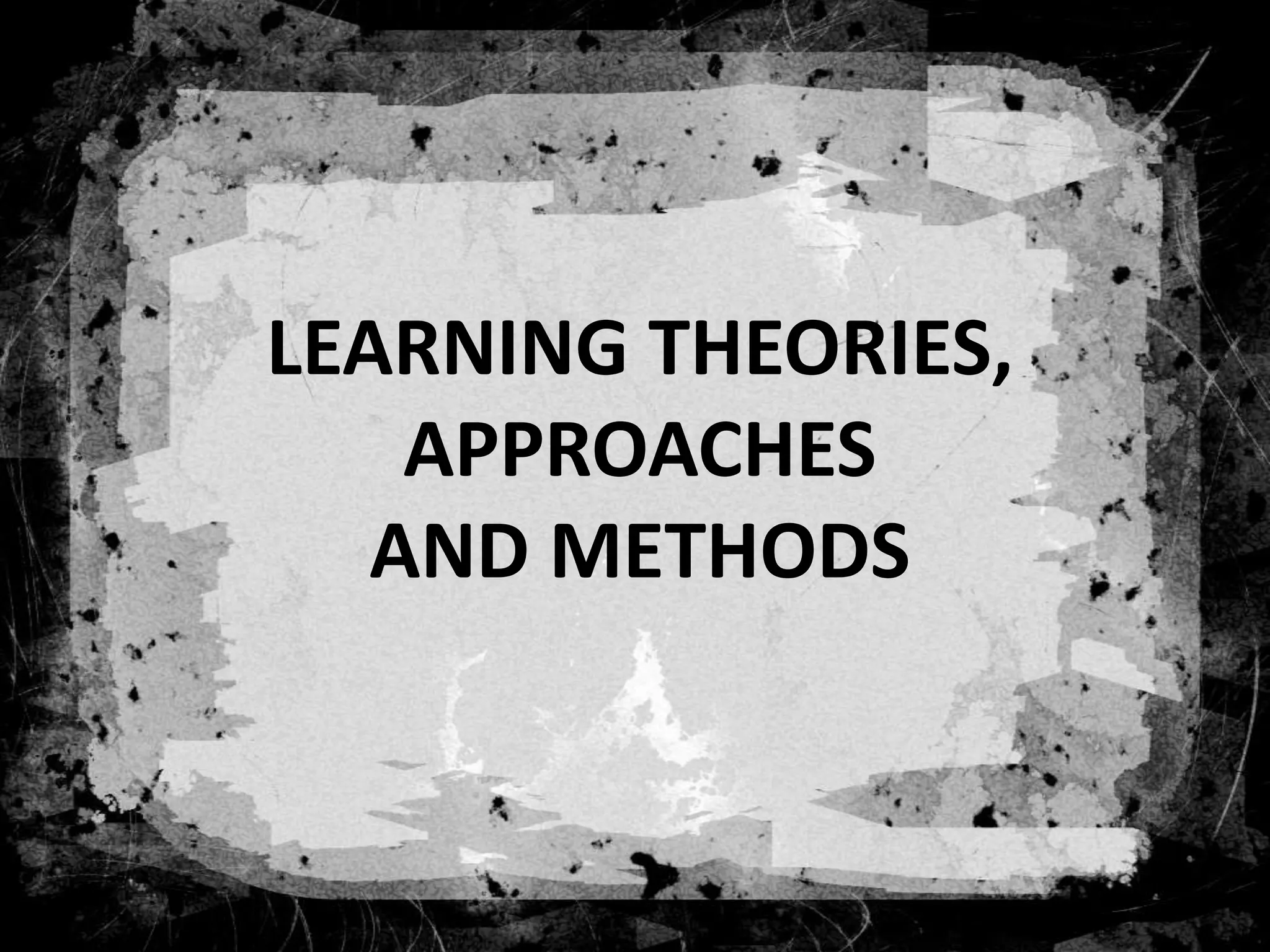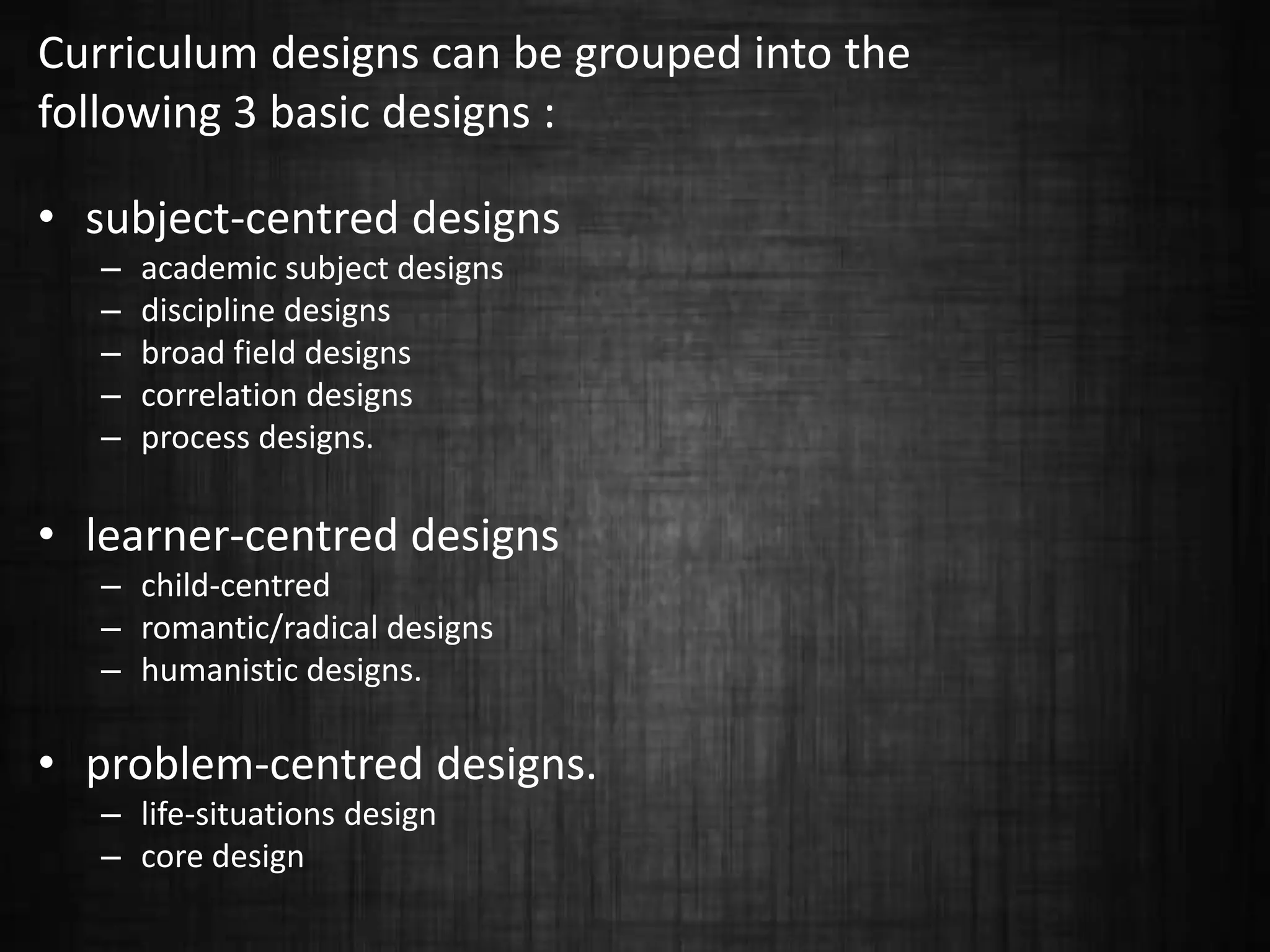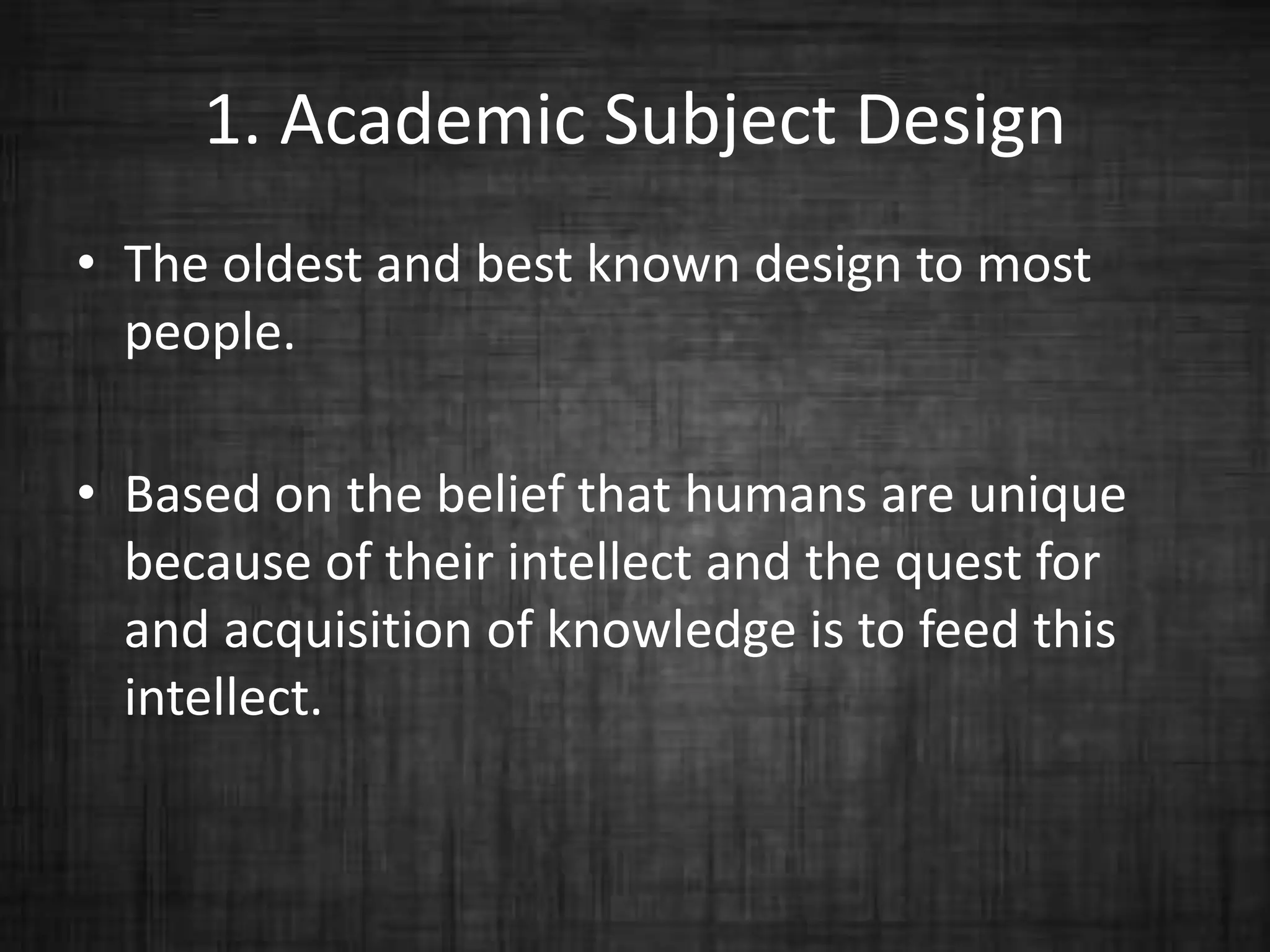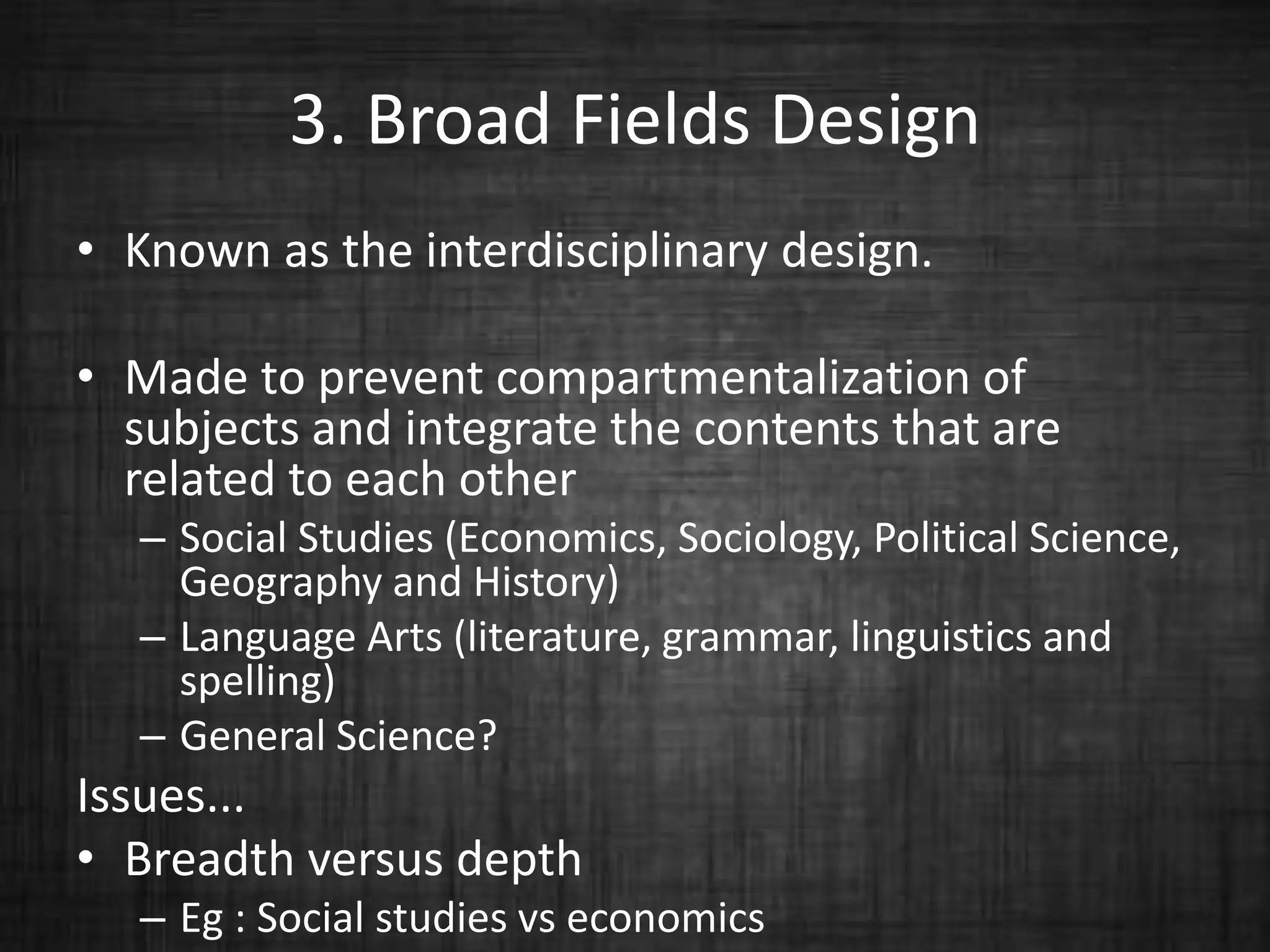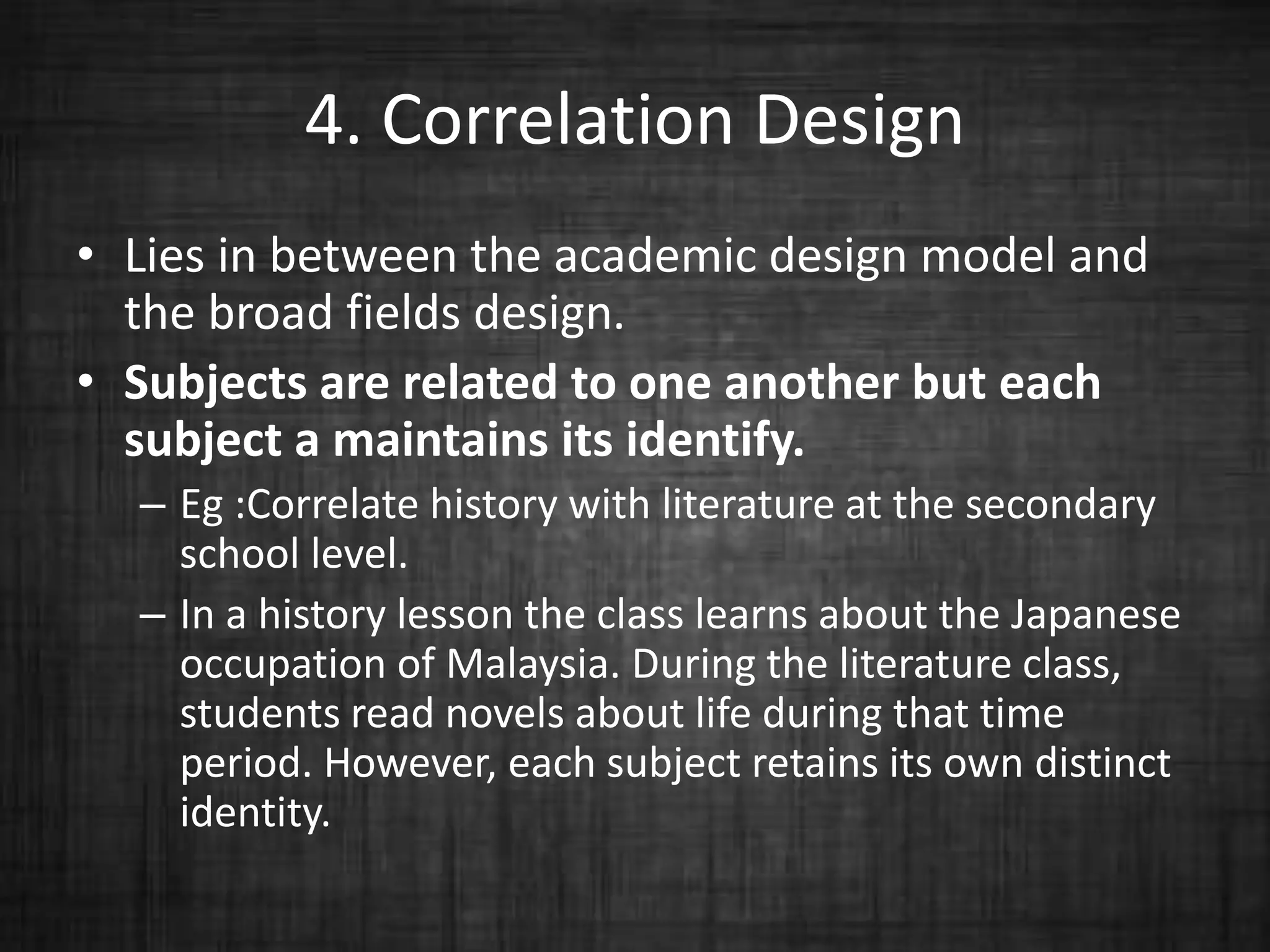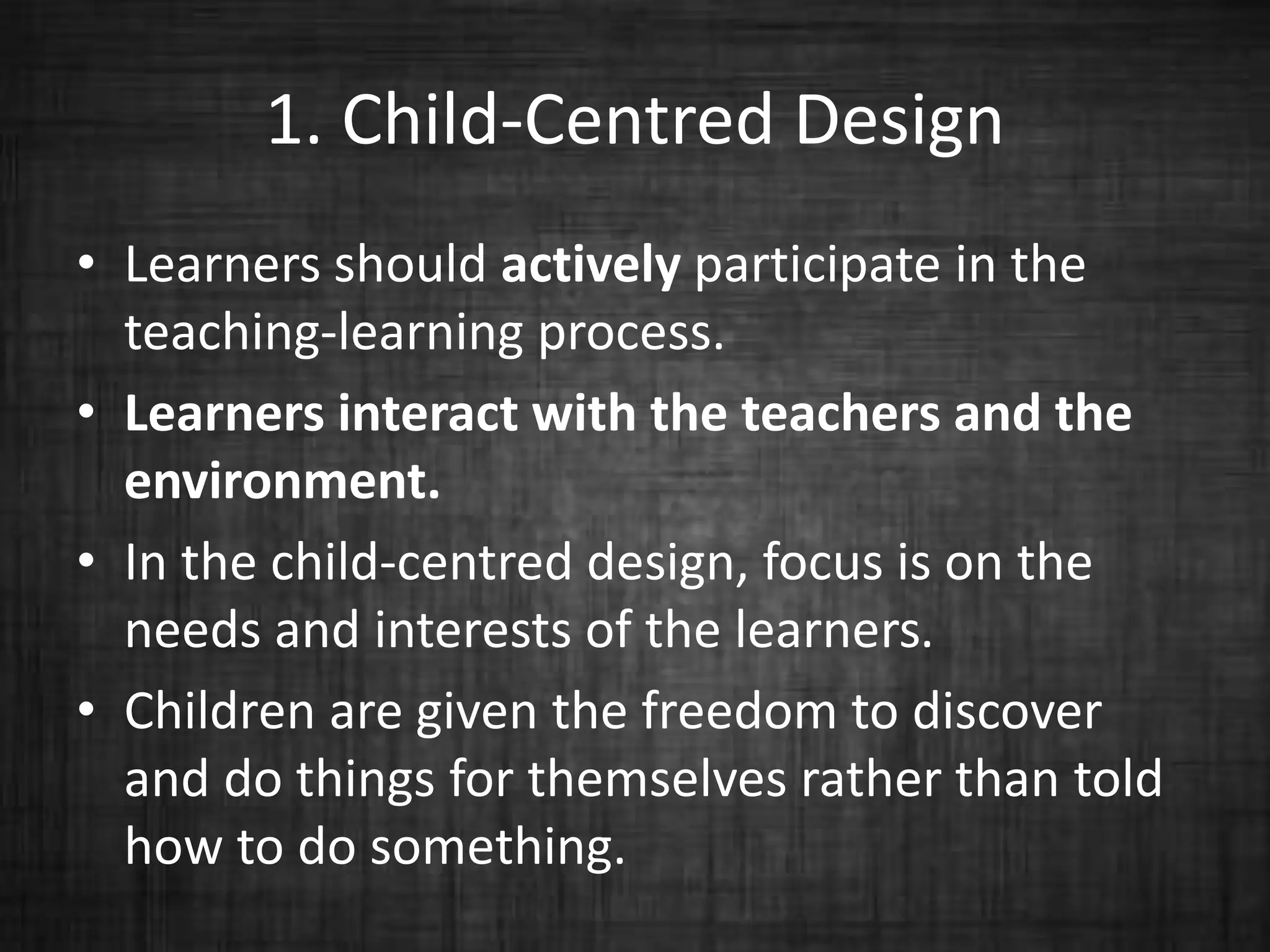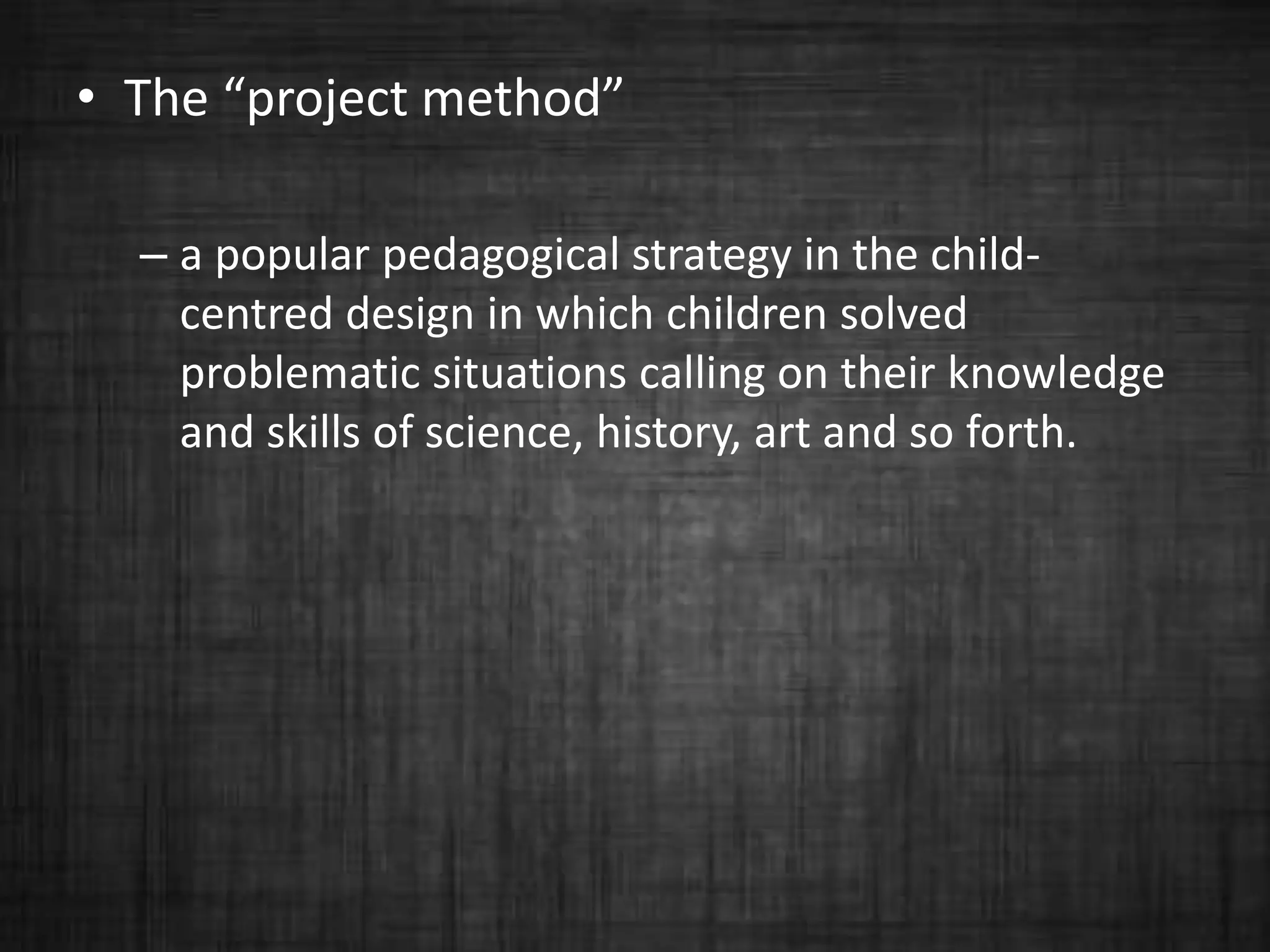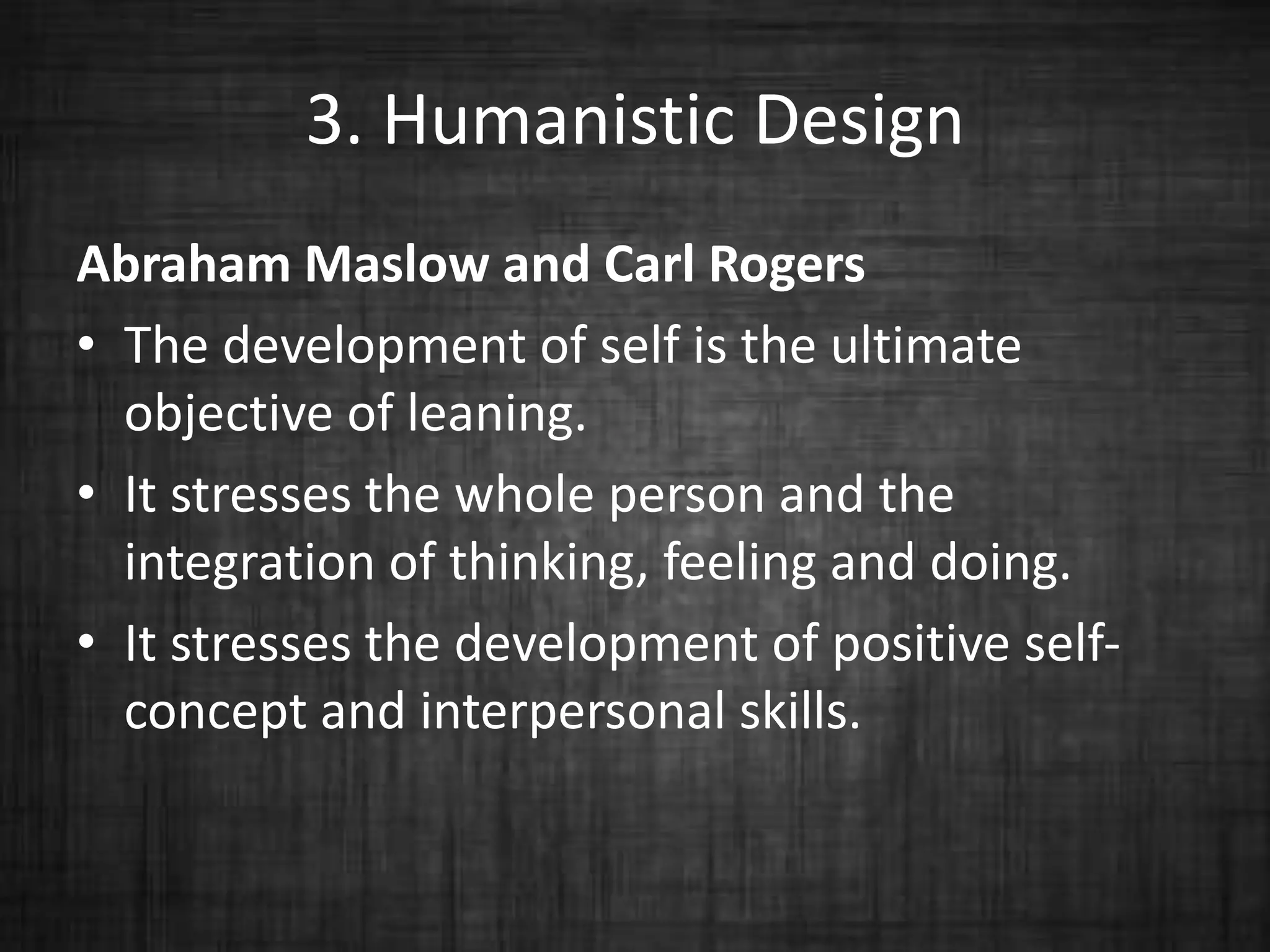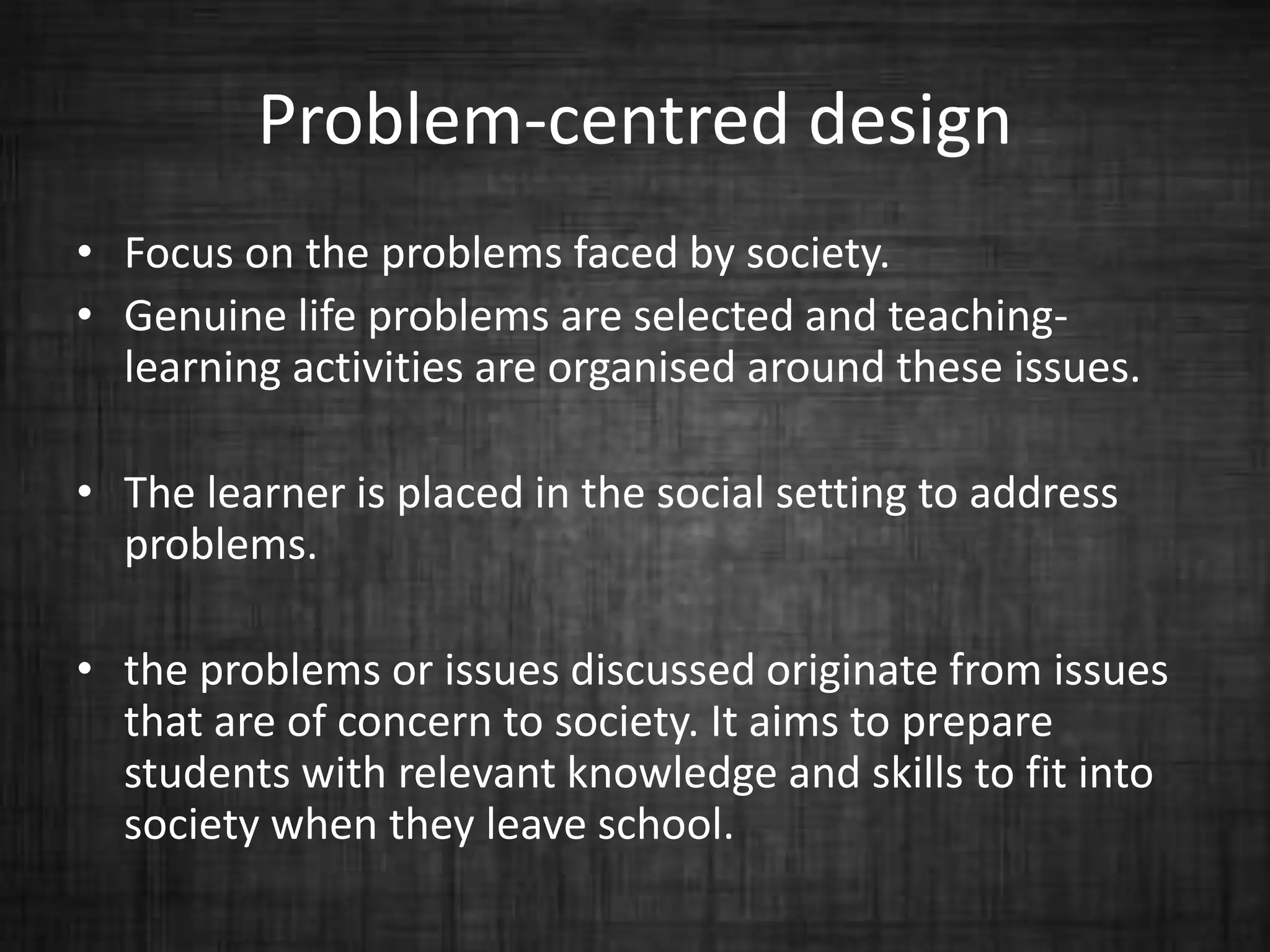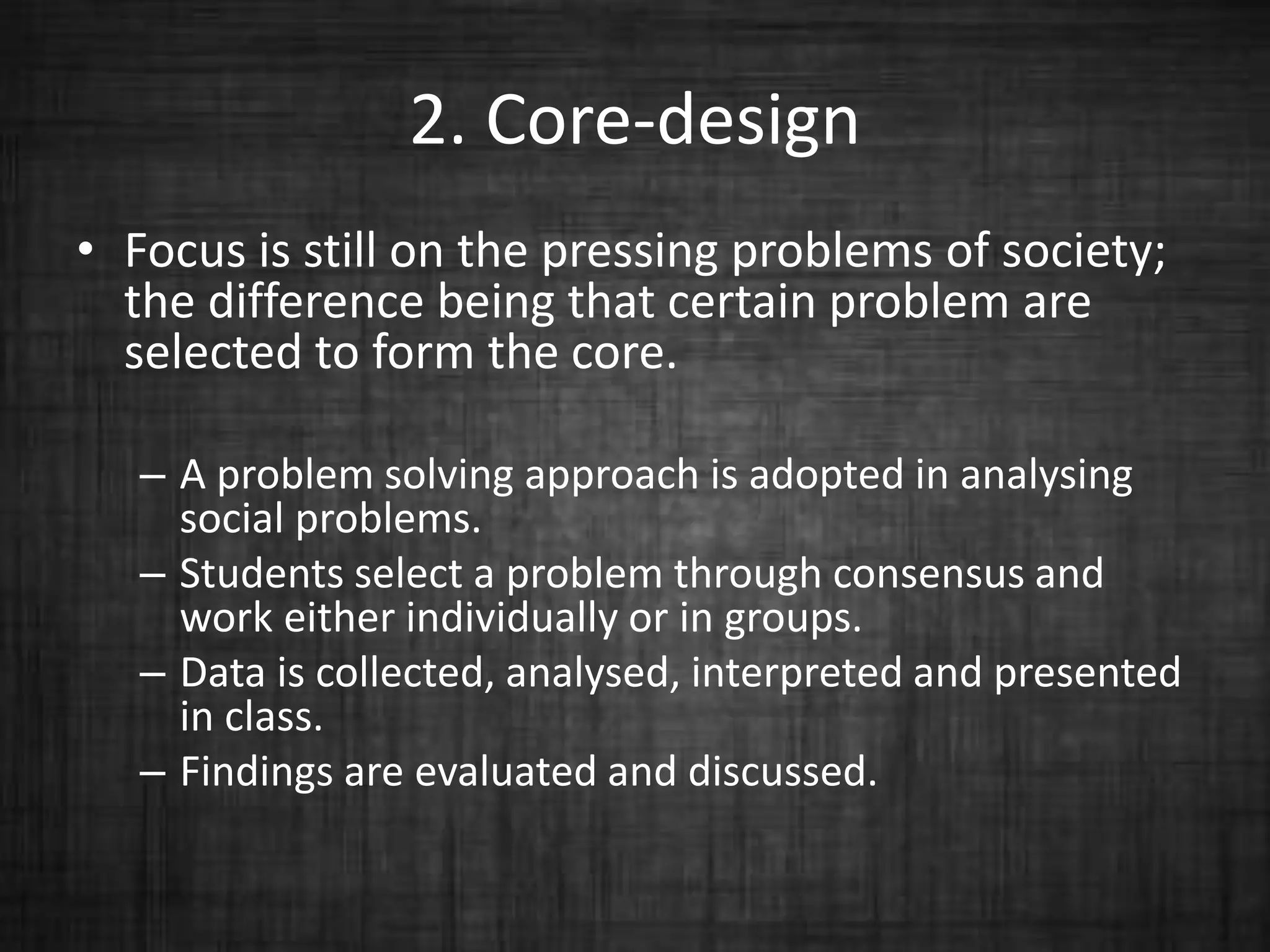Curriculum designs can be grouped into three categories: subject-centered, learner-centered, and problem-centered. Subject-centered designs include academic subject, discipline, broad field, correlation, and process designs which focus on presenting knowledge and content to learners. Learner-centered designs like child-centered, radical, and humanistic designs emphasize the development of the whole child and learner needs/interests. Problem-centered designs focus on problems faced by society and place learners in social settings to address issues.
